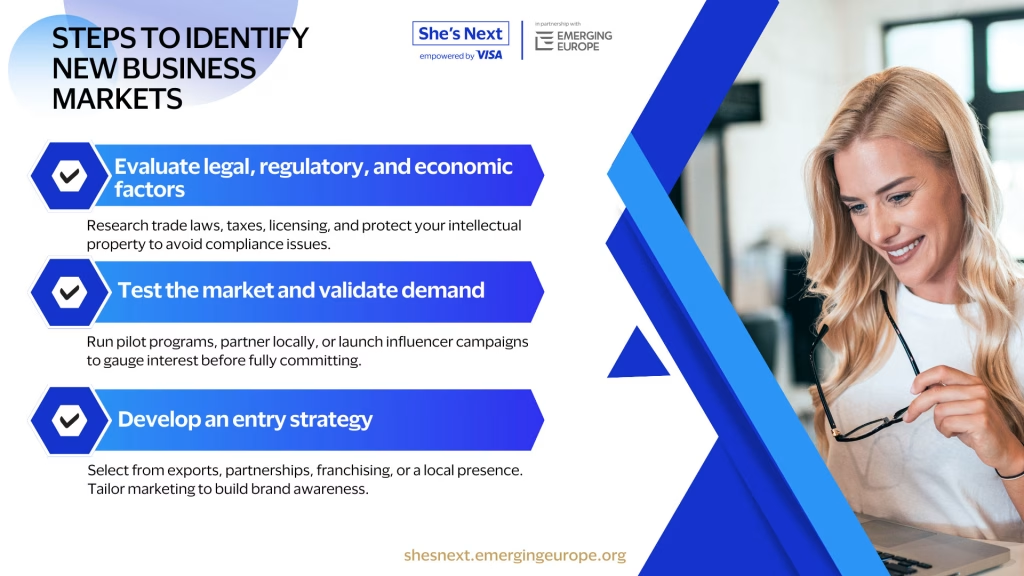
How to Identify New Markets for Your Business (Part 2) – Strategy and Execution
Market expansion isn’t about making a splash—it’s about sustained success. Identifying the right market is just the first step.
Now, it’s time to validate demand, navigate regulatory hurdles, and choose the right entry strategy.
This guide outlines how businesses from Eastern Europe and Central Asia can test new markets before committing, avoid costly compliance mistakes, and create a scalable market entry strategy.
Evaluate legal, regulatory, and economic factors
Skipping compliance checks is a recipe for setbacks.
Every country has its own trade laws, tax regulations, and operational requirements. Expanding without understanding these can lead to delays, fines, or even being locked out of the market.
Key considerations:
Business registration – Do you need a local entity, or can you operate remotely?
Tax and trade regulations – Will you face high tariffs or complex import/export rules?
Intellectual property protection – Is your brand name, product, or technology legally protected?
Example: A Georgian fintech start-up eyeing the UK market realised it needed FCA compliance before launching. Instead of delaying entry, it partnered with a local licensed firm to operate under its umbrella while securing approval.
Examples of resources to check:
EU Access2Markets (for trade rules and regulations in Europe)
US SBA (for business compliance in North America)
JETRO (for business regulations in Japan)
Test the market and validate demand
Big moves start with small tests.
Before fully launching in a new region, smart businesses validate demand through low-risk, high-feedback strategies.
How to test a market before committing:
Pilot programs – Sell in a limited region before scaling up.
Partnerships – Work with local distributors or retailers.
Influencer campaigns – Use trusted local voices to introduce your brand.
Example: A Moldovan health company entering the Nordic market partnered with local health bloggers to run small-scale awareness campaigns. The response helped shape its marketing strategy before a full launch.







